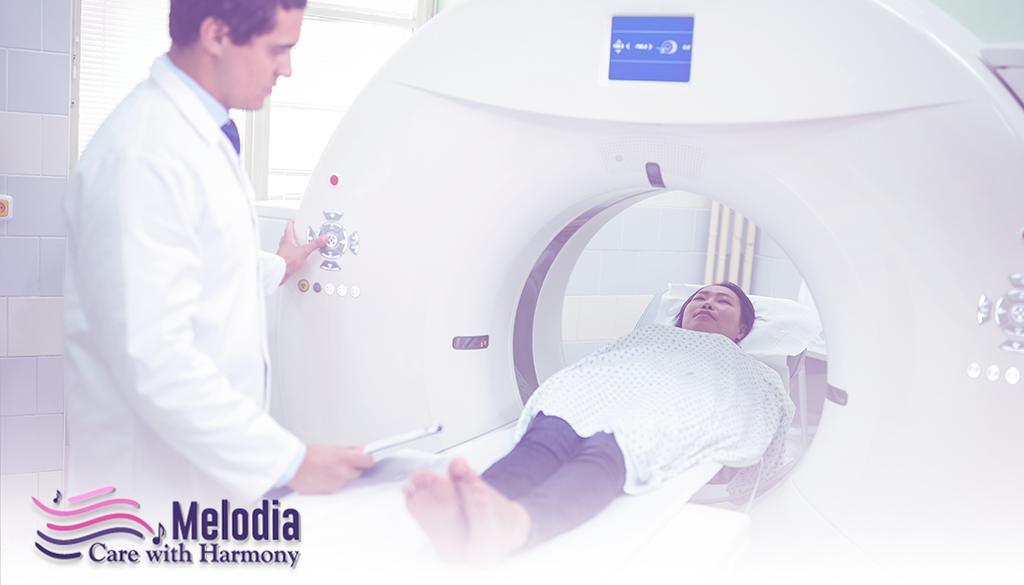Glioblastoma (glioblastoma multiforme or GBM), also called grade IV astrocytoma, is a fast-growing and aggressive brain tumor. It invades nearby brain tissue but generally does not spread to distant organs. It is the most common incurable primary brain malignant tumor in adults.
Prognosis

- 64 years old is the median age at diagnosis
- 15 months is the median survival time after diagnosis
- Favorable gene mutations (such as MGMT and IDH), age <50 years old, can see prolonged survival.
- The two-year survival rate after diagnosis is 27%
- The 5-year survival rate is 10%
- Its disease trajectory is related to the rapid rate of cognitive decline and the sharp, functional decline before this indicates that cancer is usually in the death stage.
First-Line Treatment

When someone is diagnosed with a brain tumor for the first time, their medical team will use their clinical experience to develop a treatment plan that they hope to be as effective as possible while limiting risks or side effects. The success of any first-line treatment varies from person to person. Not only do different tumor types, grades and locations respond differently to different treatments, but a person’s age, unique genetic makeup and general health can also affect the effectiveness of treatment. Sometimes, the first-line treatment may not be as effective as expected in treating brain tumors or it may have serious side effects and doctors will have to stop the treatment all together. It may even start to work and then stop working suddenly. This is entirely normal. Just because one treatment is ineffective does not mean that other treatments will be ineffective as well.
When To Start Second-Line Treatment?

If the first-line treatment fails, the medical team will explore different treatment options to develop the second-line treatment, including other drugs, clinical trials and experimental therapies. The above factors will also affect the effectiveness of second-line treatments. If it is also ineffective, third-line or even fourth-line treatment can be provided. Unfortunately, there may not be a suitable alternative therapy; otherwise, you and the medical team may make difficult decisions.
When Is The Appropriate Time For Hospice Treatment?
If the treatment is very unpleasant or has serious side effects, it is not in anyone’s best interest to try another treatment. The probability of success is minimal. At this point, hospice care will begin. Focusing on treating and relieving symptoms rather than treating brain tumors itself is part of palliative care. This is usually a challenging time for anyone affected by a brain tumor and you can find more information on how to manage a terminal diagnosis here.
Diagnosis

If your primary care doctor suspects that you have a brain tumor, you may be referred to a specialist (neurologist) trained in treating brain and nervous system disorders. Your doctor may recommend some tests and procedures, including:
Nervous System Examination

During the neurological examination, your doctor may check your vision, hearing, balance, coordination, strength and reflexes. One or more problems in these areas may provide clues about brain parts that may be affected by brain tumors.
Imaging Test

Magnetic resonance imaging (MRI) is often used to help diagnose brain tumors. In some cases, you may inject dye (contrast material) through a vein in your arm during an MRI study to help show differences in brain tissue. Many specialized MRI scan components — including functional MRI, perfusion MRI and magnetic resonance spectroscopy — can help your doctor evaluate the tumor and plan treatment.
When To Stop Prolonging Treatments For Glioblastoma?
Deciding when to stop life-prolonging treatments can be challenging for glioblastoma. As with any other type of cancer or life-limiting diseases, the patient and the clinician should make a joint decision based on fitness status, treatment expectations and quality of life preferences. The following are other medical decision-making elements for glioblastoma that are worth highlighting: There is controversy about stopping bevacizumab abruptly because of concerns about rebound angiogenic edema leading to a faster decline.
In most cases, if patients continue to receive anti-cancer treatments :
Such as radiation or chemotherapy, they will not be able to join hospice care. Despite these concerns, bevacizumab’s side effects (loss of appetite, nausea, constipation, bleeding, blood clotting) and burden are also related to this. Therefore, most experts recommend discontinuing use when the tumor is progressing so that patients can get the most support for hospice care.
When interpreting tumor status on radiography :
Close cooperation with the treating oncologist is essential, as microscopic advances can make radiological interpretation challenging.
Given the high risk of early cognitive changes :
Early advance care planning (ACP), including identifying alternative decision-makers, is critical for glioblastoma. The ACP discussion should begin at the time of diagnosis and revisit at the point of tumor contact e.g. completion of first-line treatment, disease recurrence, hospitalization and any decline in functional status.
Disease-related behavioral and cognitive changes :
Can burden caregivers and make home hospice care challenging. This may cause caregivers to feel guilty, especially for patients who desire to spend end-of-life period at home. Clinicians may need to support agents by emphasizing patient care needs and the safety benefits of a more supervised care environment. Cancer-oriented treatment For newly diagnosed patients whose physical status remains unchanged, standard treatment includes surgical resection with maximum safety, followed by temozolomide (TMZ) chemotherapy and six weeks of radiotherapy. Almost all patients will experience disease recurrence without standard treatment. On the contrary, various strategies are individualized.
• Repeat any combination of surgical resection, reradiation and chemotherapy (TMZ or other).
• Bevacizumab: a monoclonal antibody that can improve the imaging performance of tumors, thereby reducing functional defects and the need for corticosteroids. Although it can enhance the quality of life, current data show that it does not prolong survival and can cause stroke and cardiovascular events through side effects, including bleeding and clotting.
Treatments
Tumor Treatment Facility (TTF)

A helmet is worn 24 hours a day that can apply low-intensity alternating electric fields to disrupt the cell division of cancer cells. TTF is a new treatment method but the evidence is relatively limited, indicating that its combination with TMZ in treating newly diagnosed and relapsed glioblastoma can prolong survival. The appearance and burden of wearing a device all day is a considerable trade-off and may affect the quality of life.
• Hospice care is a care plan for any patient with recurrent glioblastoma, especially those with comfort-based care goals and poor performance.
Symptom Performance & Management
Tumor size, tumor location and cancer treatment side effects are the most common determinants of symptom performance.
Local Defects

Hemiplegia, aphasia, paresthesia, dysarthria, dysphagia, vision changes and neglect are common. Management includes physical, occupational and speech therapy, psychosocial support and corticosteroids (e.g., dexamethasone 2-4 mg per day or twice per day).
Cognitive Changes

Depression and anxiety are common; therefore, many patients with glioblastoma start taking antidepressants. Memory loss, personality changes, fatigue, irritability and delirium are also common. Management options include psychotropic medications, decision-making ability assessments and off-label psych stimulants to treat depression, apathy or lethargy. Although corticosteroids can help relieve symptoms of vascular origin such as headaches or nausea, they can exacerbate behavioral changes through mental side effects :
Seizures

Although seizures are a common manifestation of glioblastoma, preventive antiepileptic drugs (AED) are not recommended. Instead, benzodiazepines were used to treat active seizures, and AEDs were used after that. It is recommended to consult a clinical pharmacist or neurologist to minimize drug interactions and determine the appropriate route of administration of the AED. At the end-of-life phase, oral administration may not be feasible. For more information about rectal, sublingual, subcutaneous or intravenous routes.
Headache, Nausea & Fatigue
These symptoms may be caused by the effects of chemotherapy or radiation therapy or by disease-related increases in intracranial pressure (ICP). In addition to conventional treatment, corticosteroids may be helpful if there is angioedema. Radiation therapy and ventricular-abdominal shunt can help control the exacerbations of ICP-related symptoms.
Other Symptoms
Symptoms vary depending on the location of the brain tumor but may include any of the following:
1-Persistent Headache

2-Double Or Blurred Vision

3-Vomit Loss Of Appetite

4-Changes In Mood

5-Personality Changes In Thinking & Learning Ability

6-New Seizure

7-Gradual Speech Difficulties

Way Forward
The complex needs of patients with advanced malignant brain tumors (GBM) require a well-trained neuro-oncology team to adopt a multidisciplinary approach to manage neurological deterioration, clinical complications, rehabilitation and psychosocial issues. Palliative care plans and home care assistance models may represent alternatives to hospital care to manage the symptoms of patients who have been diagnosed with brain tumors and improve the overall quality of care for patients or caregivers, especially in the final stages of the disease.
Glioblastoma multiform (GBM) is a rare tumor; despite innovative radiation and chemotherapy and critical technological advances in neurosurgery, such as intraoperative imaging, fluorescence, Cavitron ultrasonic surgical suction and Neuronavigation but the prognosis has been poor for many years. People have paid particular attention to cancer patients’ end-of-life (EOL) period in the past few years due to ethical and socio-economic issues. Good home palliative care can avoid improper and expensive hospitalization and help and train families, caregivers and patients facing difficulties.
You can reach Melodia Care at any time of day or night by contacting us through our 24/7 online customer support chat or by calling 1-888 635-6347 (MELODI-7).










